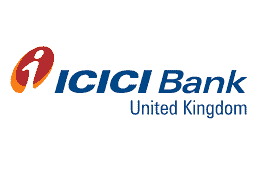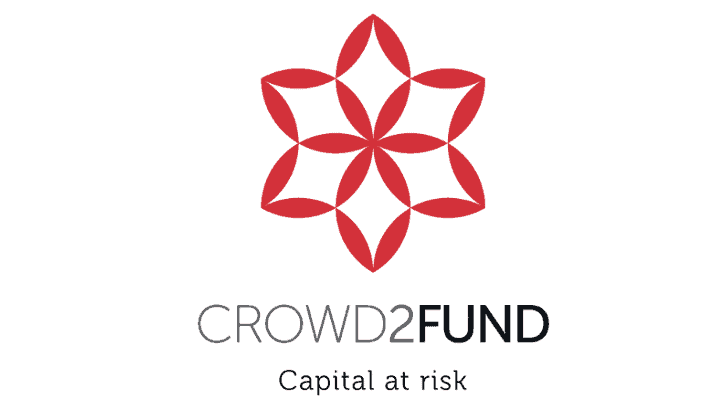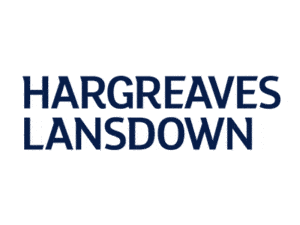How to Invest $10,000 – 15 Best Methods in 2020
If you’re currently in possession of $10,000 in savings, then you’re probably wondering what you should do with it. The key problem with letting it sit in a basic savings account is that the amount of interest you can earn is minimal. In fact, over the course of time, leaving your $10,000 in a bank account will lose you money when you take into account annual inflation.
As such, you might want to consider making some smart investments. Not only can this protect your $10,000 from rising inflation, but you also have the opportunity to grow your money.
If you need some help deciding where to invest, we’ve listed 15 smart ways to invest $10,000 in 2019.
If you’re instead looking to invest less than $10,000, why not check out our guide on how to invest $1,000? Looking to invest even more? We’ve even covered how to invest $100,000.
1. StashApp – Diversified portfolios should aim for 5% per year
StashApp is a really user-friendly platform that allows you to invest in stocks and shares, bonds, and funds. Although you are looking to invest $10,000, the reason we like StashApp is that you get make investments from as little as $5. This means that if you’re a newbie investor, you have the chance to start small before investing the full $10,000.
How to invest with StashApp?
StashApp offers its services via its native mobile app, which you can download from the iTunes Store or Google Play.
Step 1: Download the app to your smartphone device. It’s free of charge on both Android and iOS devices.
Step 2: Register an account with StashApp
Step 3: You will need to verify your identity, so make sure you have your social security number to hand
Step 4: Fund your account
Step 5: Browse the hundreds of assets listed on the platform, which includes stocks, funds, and bonds.
Step 6: Once you’ve selected an asset to invest in, decide how much you want to invest, and confirm the trade.
Pros and cons of investing with StashApp
Pros:
- Minimum trades just $5
- Ideal for newbie traders
- An extensive list of investments including stocks, bonds, and funds.
- Good selection of deposit and withdrawal methods
Cons:
- Does not list ETFs or indices
2. Robo-advisors – 5% per year for conservative strategies
If you’re unfamiliar with robo-advisors, then you should be. The phenomenon utilizes artificial intelligence to build tailor-made investment portfolios on your behalf. This makes it ideal if you want to invest your $10,000 into the financial markets, but have virtually no experience. Robo-advisor platforms cost just a fraction of that charged by real-world financial advisors.
How to invest in Robo-advisors?
As a robo-advisor refers to the actual technology, you’ll need to use an online platform. M1 Finance offers users an intuitive robo-advisor service, and they don’t charge any commissions or fees. You get to choose the level of risk that you want your robo-advisor to implement, and you only need to start with $100.
Step 1: Head over to the M1 Finance platform and open an account.
Step 2: You will need to provide M1 Finance with some personal information, as well as details about your tolerance to risk.
Step 3: Select what account you want to open (individual, retirement, trust account or joint brokerage)
Step 4: Fund your account
Step 5: Decide what level of risk you want your robo-advisor to utilize
Step 6: Decide how much you want to invest, from as little as $100
Pros and cons of investing in robo-advisors
Pros:
- Platforms like M1 Finance charge no fees
- Perfect if you want to invest but have no experience
- Start with just $100 before increasing your investments
- No need to spend any time making investments as it’s done for you
Cons:
- The underlying artificial intelligence will determine how successful the robo-advisor is
3. Savings Bonds – 1-3% per year
If you’re looking to invest your $10,000 into a risk-free asset, then it doesn’t get much better than savings bonds. While on the one hand, the interest rates on offer are much lower than other investment opportunities, you need to remember that this matches the underlying risk. Moreover, if you’re able to invest in UK savings bonds with a bank or building society, then your funds should be protected by up to £85,000 by the FSCS government scheme.
How to invest in Savings Bonds?
In order to invest in savings bonds, you will need to purchase these directly from the financial institution that has issued them. Once you do, you’ll receive yearly interest payments until the savings bonds expire. When the bonds do expire, you’ll then get your original investment back. One of the best options currently available is the 3-year, 2.4% yield savings bonds being sold by ICICI Bank UK.
Step 1: Open an account with ICICI Bank UK
Step 2: You’ll need to verify your identity, which is likely to require an upload of your ID
Step 3: Decide how much of your $10,000 you want to invest (minimum approx $1,300) and transfer the funds from your bank account
Step 4: At the end of each year, you will receive 2.4% in interest payments
Step 5: At the end of the 3-year term, you’ll receive your original investment back.
Step 6: Transfer both your original investment and interest payments to your bank account
Pros and cons of investing in savings bonds
Pros:
- Ultra-low risk
- Usually protected by UK’s FSCS scheme if bought from a UK bank
- Earn regular interest payments
Cons:
- Cash locked-up until the bonds expire
4. Stocks and Shares – Up to 10% per year
If you’re looking to grow your $10,000 long-term, then you should think about investing in stocks and shares. With thousands of different stocks on offer, the best option is to diversify your risk by building a large portfolio. It’s always a good idea to combine stocks that offer good dividend payments, and long-term appreciation growth.
Pros and cons of investing in stocks and shares
Pros:
- Earn regular dividends
- Long-term growth
- Reduce risk by building a large portfolio
Cons:
- Lots of research required before investing in a stock
5. Legal Marijuana Markets – Target 5% per year
The legal marijuana industry is a multi-billion dollar marketplace. Although much of this is dominated by medical marijuana, the recreational space is where the money really is. With Canada becoming just the second country in the world to legalize recreational marijuana, it is not unlikely that other first-world nations will soon follow. As such, utilizing some of your $10,000 savings into this growing industry could be a smart move.
Pros and cons of investing in the legal marijuana industry
Pros:
- More and more nations are relaxing marijuana regulations
- You can now invest in a Marijuana ETF
- Invest as much or as little as you like
Cons:
- Higher risk industry, as governments control regulation
6. Real Estate - 5-15% per year (depending on market conditions)
Did you know that you can now invest in real estate without needing to buy an entire property? Thanks to crowdfunding, you can now own a fraction of a house. As such, you can even diversify your $10,000 investment by owning fractions of multiple properties. Not only will you get your share of appreciation, but you'll also get monthly rental income.
How to invest in real estate with $10,000?
To invest in real estate with just $10,000, you'll need to use a crowdfunding platform. Property Partner allows you to invest in the UK property market, and they only charge 2% per transaction. Even better, you'll make money both from monthly rental payments and an increase in property value.
Step 1: Register with Property Partner
Step 2: Confirm your identity (Upload a copy of your passport/driving license)
Step 3: Browse the many property investment opportunities
Step 4: Enter the amount that you want to invest
Step 5: Deposit funds (debit/credit card is best)
Step 6: Complete your purchase
Step 7: Your share of the monthly rental payments will be paid into your PropertyPartner account
Pros and cons of investing in real estate
Pros:
- One of the safest assets in the investment space
- Investment backed by a real-world asset
- Earn monthly rental yield
- Earn profit as the value of the property increases
- Just 2% transaction fee with Property Partner
Cons:
- Secondary market does not have much liquidity, so you’ll need to wait for the property to be sold
7. U.S. Treasury Bonds – Around 1-2% per year
If you thought real estate was safe, then U.S. Treasury Bonds (T-Bills) are even safer. By investing in T-Bills, you are essentially lending the U.S. government money. In return, they’ll pay you interest. The only risk of you losing your investment is if the U.S. government collapsed. If they did, you’d have bigger things to worry about!
In terms of the returns, you’ll only make between 1-2% per year, however, if you’re looking for an ultra-safe investment, then it might be worth considering.
How to buy U.S. Treasury Bonds?
You can now buy U.S. Treasury Bonds directly from the U.S. Treasury Office website. Simply register an account, verify your identity and then you can buy T-Bills in denominations of $100.
Step 1: Register on the U.S. Treasury Office website
Step 2: Verify your identity
Step 3: Choose the length of the bonds (maximum of 10 years is best)
Step 4: Pay for your bonds
Step 5: When the bonds expire, you'll receive your original investment, plus interest payments. You can then withdraw the funds to your bank account
Pros and cons of investing in U.S. Treasury Bonds
Pros:
- The only way you can lose your money is if the U.S. government collapsed
- Buy directly from U.S. Treasury office website
- Buy in denominations of $100
- No fees
Cons:
- Really low yields on offer
8. Lend Capital to Business Startups – Up to 15%
New business startups are always in the lookout for capital (cash) to help fund their projects. While they usually get this from angel investors, raising money in the form of crowdfunding is getting more and more popular. If you like the sounds of what the startup is looking to achieve, then you might think about using your $10,000 to help fund them. You’ll get up to 15% per year in interest, which reflects the risk.
How to invest in a new business startup?
Crowdfunding platforms like Crowd2Fund allows you to lend money to new business startups based in the UK. Some lending agreements pay up to 15%. If you’re looking to invest your entire $10,000, you’re best to diversify across multiple loans.
Step 1: Register with Crowd2Fund
Step 2: Fund your account (debit/credit card)
Step 3: Browse the different funding opportunities
Step 4: Do as much research on the business as you can
Step 5: Decide how much you want to invest
Step 6: At the end of the term, you’ll receive your initial investment, plus the interest
Pros and cons of investing in small business startups
Pros:
- Earn up to 15% per year in interest
- Only back projects that you believe in
- Crowdfunding allows you to diversify your $10,000 investment
Cons:
- Lending money to new companies is high risk
9. Cryptocurrencies – Bitcoin made 2,000% in 2017
There are now more than 2,000 different cryptocurrencies that you can invest in. This includes well-known cryptocurrencies such as Bitcoin and Ethereum, as well as a range of lesser-known projects. Cryptocurrencies are probably the riskiest asset classes on offer, so tread with extreme caution. While your chosen cryptocurrency could make 1,000% or more in a year, it could equally lose 90%+.
Pros and cons of investing in cryptocurrencies
Pros:
- Chance of large returns
- Over 2,000 cryptocurrencies now in existence
- Get started with small amounts
- 24/7 marketplace, so cash out whenever you want
Cons:
- Very high risk
- You could lose your entire investment
10. Lend Capital to Property Developers – 8-12% per year
As a backdoor to the real estate industry, you can now invest in new property development projects. When construction companies need to help to fund a new project, you can lend them the required funds via crowdfunding. This operates in the same way as a loan, and some companies sell the funding agreement as property bonds. Ultimately, although the space is higher risk, you should expect annual interest payments of between 8-12%.
How to invest in property developers?
You will need to use a crowdfunding platform that specializes in funding property developers. The Property Crowd is really good in this respect, as they perform the due diligence on your behalf. The platform doesn’t charge any fees, and you can back a property developer with an investment of around $1,000. As such, you can diversify your $10,000.
Step 1: Register with the Property Crowd
Step 2: Receive a curtsy call and ask any questions or concerns you have
Step 3: Browse the many investment opportunities
Step 4: Deposit some funds
Step 5: Purchase property bonds in your chosen development project
Step 6: At the end of the term, you’ll get your initial investment back, plus the interest
Pros and cons of investing in property developers
Pros:
- Yearly interest of between 8-12%
- Invest from as little as $1,000 per project
- Ideal for those that want to invest in the real estate space short-term
Cons:
- If the developer defaults on payment, your fund are at risk
11. ETFs – Up to 10% per year (depending on the industry)
Exchange Traded Funds (ETF) allow you to invest in a group of assets via a single investment. They track the prices of entire marketplaces such as the FTSE100 or the marijuana industry. For example, instead of making 30 individual investments into the 30 companies that make up the Dow Jones, you can instead place a single trade via an ETF.
Pros and cons of investing in ETFs
Pros:
- Allows you to get exposure to a market that would otherwise be difficult to invest in (like foreign government bonds)
- Choose from hundreds of different markets
- Decide whether you want to go “long” or “short”
- Invest small amounts, which is great for diversifying your $10,000
Cons:
- You don’t own the underlying asset that you are backing
12. Peer-to-Peer Lending - 4-7% per year
Peer-to-peer lending removes the role of the bank. Investors can now lend money in return for favorable interest payments, directly to those that need to borrow funds. Peer-to-peer lending platforms will determine the risk of the loan, and perform the due diligence on your behalf. Expect annual interest payments of between 4-7%.
How to invest in peer-to-peer lending?
You'll need to use a peer-to-peer lending platform like LendingClub if you want to invest your $10,000. The platform has a range of risk categories, so you can choose your own risk levels. It's best to spread your investment out across hundreds of loans to minimize your risk.
Step 1: Register with LendingClub
Step 2: Answer some questions about your net worth and risk tolerance
Step 3: Verify your identity
Step 4: Either choose your loans individually or allow LendingClub to package lots of loans based on your risk level
Step 5: Fund your account
Step 6: You'll receive your money back in monthly installments until the loan agreement concludes
Pros and cons of investing in peer-to-peer lending
Pros:
- Attractive interest of between 4-7% per year on offer
- Minimize risk by backing thousands of loans
- LendingClub perform due diligence on the borrower
- Choose your risk category
Cons:
- If the borrower defaults, you could lose your investment
13. Mutual Funds – Aim for 10%+
If you’re looking to invest an amount of money as large as $10,000, then it’s probably a smart idea to let a professional manage it on your behalf. This is exactly what a mutual fund is intended for. In a nutshell, you pay a fund manager to make investments on your behalf. This is perfect if you want to invest in the financial markets but you don’t have any experience.
How to invest in mutual funds?
You can invest in a mutual fund by using an online stock broker like Hargreaves Lansdown. The platform gives you access to dozens of different funds, most of which come at an annual cost of 0.45%. You can take your money out whenever you like, although mutual funds are best for long-term investments.
Step 1: Register with Hargreaves Lansdown
Step 2: Fund your account with a debit or credit card
Step 3: Choose which fund you want to invest in
Step 4: Decide how much you want to invest
Step 5: You’ll receive dividends for applicable shares that the fund invests in
Pros and cons of investing in mutual funds
Pros:
- Allow an experienced professional to invest on your behalf
- Earn passive income
- Top performing fund managers often exceed profits of 10% per year
- Fees very reasonable at 0.45% per year
Cons:
- You won’t have any say in the assets the fund chooses to buy or sell
14. Penny Stocks - Make or lose 20%+ in a year
Penny stocks are publically listed companies that have a share price of $5 or less. They are typically very small firms that are listed on OTC (Over-the-Counter) markets such as the Pink Sheets. This means that liquidity levels are low, volatility is high, and you might have trouble entering and exiting the market quickly. However, penny stocks appeal to some investors because of the potential of significant gains. On the other hand, risk levels are super high, so make sure that you don't invest your entire $10,000 purely in penny stocks.
Pros and cons of investing in penny stocks
Pros:
- Huge upside potential
- Back companies before they make it big
- Cheap share prices, so chance to diversify across multiple companies
Cons:
- Ultra high-risk asset class
15. Commodities - Depends on commodity - 5-15% per year
Commodities refer to physical assets that can be traded in the open marketplace. This includes the likes of gold, silver, oil, and wheat. Although these investments don't pay interest or dividends, you need to remember that your investment is backed by a real-world asset with value.
How to invest in commodities?
Due to the physical nature of commodities, the easiest way to invest is via a CFD (Contract-for-Difference). This means that you can speculate on the asset's price without needing to physically store or own the commodity.
Pros and cons of investing in commodities
Pros:
- Investments are backed by something of real-world value
- Some assets like gold and oil are scarce
- Good to hold during financial recessions
- You can easily invest via a CFD or ETF
Cons:
- Volatility can be an issue
5 things to keep in mind before investing your $10,000
$10,000 is a lot of money, so you need to ensure that you know what you are doing. Before you part with your money, make sure you consider the following five questions.
1. How long can you hold on to your investment for?
Ask yourself how long you are willing to invest for before cashing out. If you only want to invest short-term (1-year or less), then you're best off sticking with investments such as savings bonds, peer-to-peer lending, or crypto. On the other hand, if you want to invest long-term, then focus on the likes of real estate, U.S. Treasuries, and stocks and shares.
2. What level of risk are you prepared to take?
Before you make an investment, you need to understand the underlying risks. The higher the risk, the higher the returns should be. If you have an appetite for high risk, then you'll be best suited for penny stocks or crypto. Alternatively, if you want to minimize your risk levels, and you're happy with smaller returns, then focus on bonds.
3. How much money are you looking to make?
It's important that you set some long-term profit goals. For example, if you plan to make 5% per year, then focus on investments that can make you this amount in the safest manner possible. If you are instead happy making 2% or less, then you can buy bonds to match your yield target.
4. Do you understand the asset you are investing in?
You should only ever invest in an asset that you understand. For example, if you don't have any knowledge of the stocks and shares space, but you still want to invest, then you're probably best suited for a mutual fund. Always perform sufficient research on any investment before parting with your money. Most importantly, make sure that sufficient regulation exists.
5. Can you handle market swings?
If you are investing in an asset that is suspectable to market swings, you need to be prepared for it. Markets will never go up in a continuous manner. On the contrary, all marketplaces will experience ups and downs. Just be emotionally ready for this, as losses at some point are inevitable.
See Our Full Range Of Investment Resources - Investments A-Z












